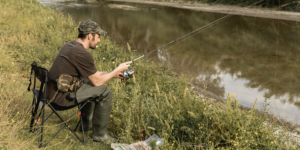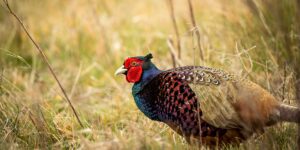Like many hunting gear related topics, shotgunners typically have strong opinions or personal preferences when asked about choke or choke tube size and the ideal shotgun shell. This of course greatly depends on the game bird you’re targeting, the shotgun you’re using and even the conditions you’re faced with in the field. Having said this, there are certainly standards that have been set for pheasant hunting, duck hunting and other pursuits in their own right. Let’s start with the basics.
Key Insights:
• Chokes are the constrictions at the end of shotgun barrels that dictate shot patterns.
• Choke tubes allow users to change chokes without barrel alteration.
• Cylinder, skeet, and improved cylinder chokes are good for small game birds and short range shooting.
• Modified and full chokes are better for larger game birds or longer range shooting.
• Shotgun loads refer to the total weight of payload in a shell, while shot refers specifically to pellets.
Why limit yourself to public land when there are millions of acres of private land to explore.
Chokes, Loads, and Shot Size- The Basics
What is a Choke?
The choke of a shotgun is the constriction at the end of the barrel which dictates the pattern of the shot as it exits the barrel upon firing. Some chokes are tighter while others are more open, changing the pattern of your shot accordingly.
Some shotgun barrels have fixed chokes, meaning the constriction is built into the barrel and cannot be altered by the user. More common is a shotgun that has choke tubes. This allows you to change the choke of your shotgun with a choke wrench by screwing choke tubes in or out of your gun barrel. You can quickly change between skeet, modified or full chokes for example depending on the situation.
Types of Chokes
Shotgun hunters typically select their choke based on the game bird they are pursuing. The more open chokes are usually used for pursuits like quail, dove or certain types of grouse hunting. Mid range chokes are ideal for pheasant hunting and duck hunting, while the tightest chokes are used for goose or turkey hunting.
Cylinder
A cylinder choke ultimately offers no restriction and results in the widest pattern. Smaller game birds and short range shooting would be the situation for a cylinder choke. Skeet or sporting clay shooters might opt for a cylinder choke as well.
Skeet
A skeet choke also offers a wide spread but is slightly tighter than a cylinder choke. Again, smaller game birds and clay pigeon shooters usually select a skeet choke. On rare occasions, some upland hunters that are encountering pheasants at close range might install a skeet choke.
Improved Cylinder
With improved cylinder, we’re moving into the mid range and more commonly used chokes. Improved cylinder is very common for pheasant and duck hunters, especially if they are using an over under or double barrel shotgun. In this case the shotgun has two barrels, allowing shooters to select an improved cylinder choke for their first barrel and a tighter choke for their second barrel.
Modified
A modified choke is arguably the most common option for many different types of shotgun hunting. It’s an excellent choice for certain grouse hunting situations but especially pheasants, ducks and closer range goose hunting.
Full
A full choke is creating one of the tightest patterns available and fits the bill for larger game birds like geese and turkeys. Many pheasant hunters will select a full choke during later season hunts when the birds are tougher and typically presenting longer shots. Weather conditions could force a pheasant hunter to select a full choke as well. Windy, late season hunts often call for a full choke.
When selecting the choke or chokes for your shotgun you need to consider the bird or animal you’re hunting, the range at which they will typically be encountered and potentially the conditions that you’ll be faced with during that particular hunt.
The hassle free way to monetize your acreage.
Shotgun Loads vs Shot
The combination of your shotgun, shotgun shell and the chokes you’re using ultimately defines how your system is going to perform. And all of these factors can be altered based on your pursuit and/or personal preferences. Selecting shotgun shells can almost be compared to the fixed blade vs. expandable broadhead debate. Every hunter has opinions on the best products and the ideal approach. There are tons of shells on the market and it can be intimidating, especially for new shotgun owners. We’ll do our best to explain shotgun shells and the best options depending on how you’ll be using your shotgun, as well as a bit of common sense to consider when selecting the load and shot of your shells.
The load of a shotgun shell refers to the total weight of the payload that’s in the shell. For the common 12ga shotgun, this typically ranges from 7/8oz to 2oz. The more shot in the shell, the more powerful and the more recoil one can expect when firing the gun. Heavier loads are again used for larger game birds when more knockdown power is needed.
The shot in a shell is referring specifically to the pellets. Two things need to be considered here… The individual shot size, which typically ranges from “No. 9” shot to “BB” shot. The larger the number, the smaller the shot is. The material of the shot also needs to be considered. Most common is lead, but ammo manufacturers are now offering several other types of shot in order to be environmentally conscious and allow hunters to abide by some of the non-toxic regulations that are in place on public hunting ground where lead has been outlawed. Steel, bismuth and tungsten are a few of the other materials that are now being used in shotgun shells.
Factors that Influence the Load you Choose
Similar to choke selection, the shotgun shell load you select is typically based on the bird you’re pursuing and the range at which you expect the majority of shots to take place. The heavier the shell load typically means you’ll have more speed and knockdown power. This option sounds like a no-brainer but isn’t necessarily a good thing in all situations. Fast and powerful isn’t a good option when wingshooting smaller game birds at close range. Birds can be damaged beyond being able to salvage any meat. Fast, heavy and “hot” loads also often result in a poor shot string or pattern. The shot comes out of your barrel at such a high velocity that your pellets tend to string out vs remaining in the disc pattern that a shotgun is meant to produce. Heavier loads are best for late season pheasants and waterfowl. Both hunts encounter slightly larger, fast moving birds that are at long distances. Light loads are a great option for close range wingshooting of quail, grouse, doves and pheasants. Light loads also have much lighter recoil, making them easier on the shooter and typically are more balanced, creating a true disc shot pattern. Even though light loads are slower, you’ll find many upland hunters prefer them due to their consistent shot patterns and limited recoil, especially those who shoot over-under and double barrel shotguns.
Factors that Influence the Shot you Choose
Shot size mirrors load size in terms of the reasons you choose between one or the other. Smaller game birds are pursued with 7 ½, 8 and 9 shot, pheasant hunters use 5 and 6 shot, while waterfowlers fluctuate between 2 and 4 shot. The material of your shot is also factored into this selection. If regulations allow you to use lead shot, which is heavier, you can get away with a smaller shot size, like a No. 5, 6 or 7 ½. For waterfowlers, steel or non-toxic shot is required. This is typically only available in lighter materials which forces them to increase their shot size to No. 2, 3 or 4.
Types of Shot
The variety of shot sizes and types at your local retailer can be daunting. 30-40 years ago and beyond, there was lead shot in a few different sizes, now we have to sift through bismuth, tungsten, steel, varieties of coated and plated shot and everything in between. Much of this is for good reason and to accommodate waterfowl hunters and other public land hunters where lead isn’t allowed. Lead is most traditional and commonly used by pheasant, grouse, quail and turkey hunters. For waterfowlers, or hunters that are pursuing game birds on certain public lands where lead is banned, non-toxic shot is required. Steel is the traditional option here but in recent years, several other shot types have hit the market. The goal of these options is to be as heavy and effective as lead while remaining non-toxic. Common options here are bismuth and tungsten. These shot types often produce better performance than steel but cost a pretty penny.
FAQ
What choke is best for pheasants?
Day in and day out, the best choke to use on a pheasant hunt is modified. A modified choke tube or modified bore will answer the call for a variety of gauge shotguns from early to late season. If you use a two barrel gun, the best approach is to use improved cylinder in your first barrel for your first shot and modified in your second barrel for your second shot when the bird is further away. During late season pheasant hunting, incorporating a full choke for more mature, tougher birds that are at longer distances can be a good choice.
How Many Shells To Carry When Pheasant Hunting?
ou’re hunting wild pheasants in an area that isn’t loaded with birds, you can likely decrease that number a bit. If you’re hunting pheasants on a preserve where flushes are plentiful and it’s a near guarantee that your shotgun barrels will be warm, bring 20-25 shells.
What Shotgun Shell Is Ideal For Pheasant Hunting?
our opinion, the ideal shotgun shell for most pheasant hunters is a 12 gauge 2 ¾” shell in 1 ¼ oz No. 6. This setup will work from opening day to the end of the season. As we’ve stated throughout the article though, hunters should be flexible on their shell selection and read the hunt or conditions. Early season birds or game farm birds might only require 1 ⅛ oz load. Or late season, wild pheasants should possibly receive 1 ⅜ oz No. 5’s for a little extra knockdown power.
Is it possible to hunt pheasants with a full choke?
be selected based on the situations of the hunt. A full choke can be considered during late season wild bird pheasant hunts. This is because by this time of the season, birds are matured, fully feathered for warmth and they have been educated by hunting pressure. This results in tough birds that are typically flushing further away from hunters. A full choke can provide you with better knockdown power at greater distances.
Why limit yourself to public land when there are millions of acres of private land to explore.



